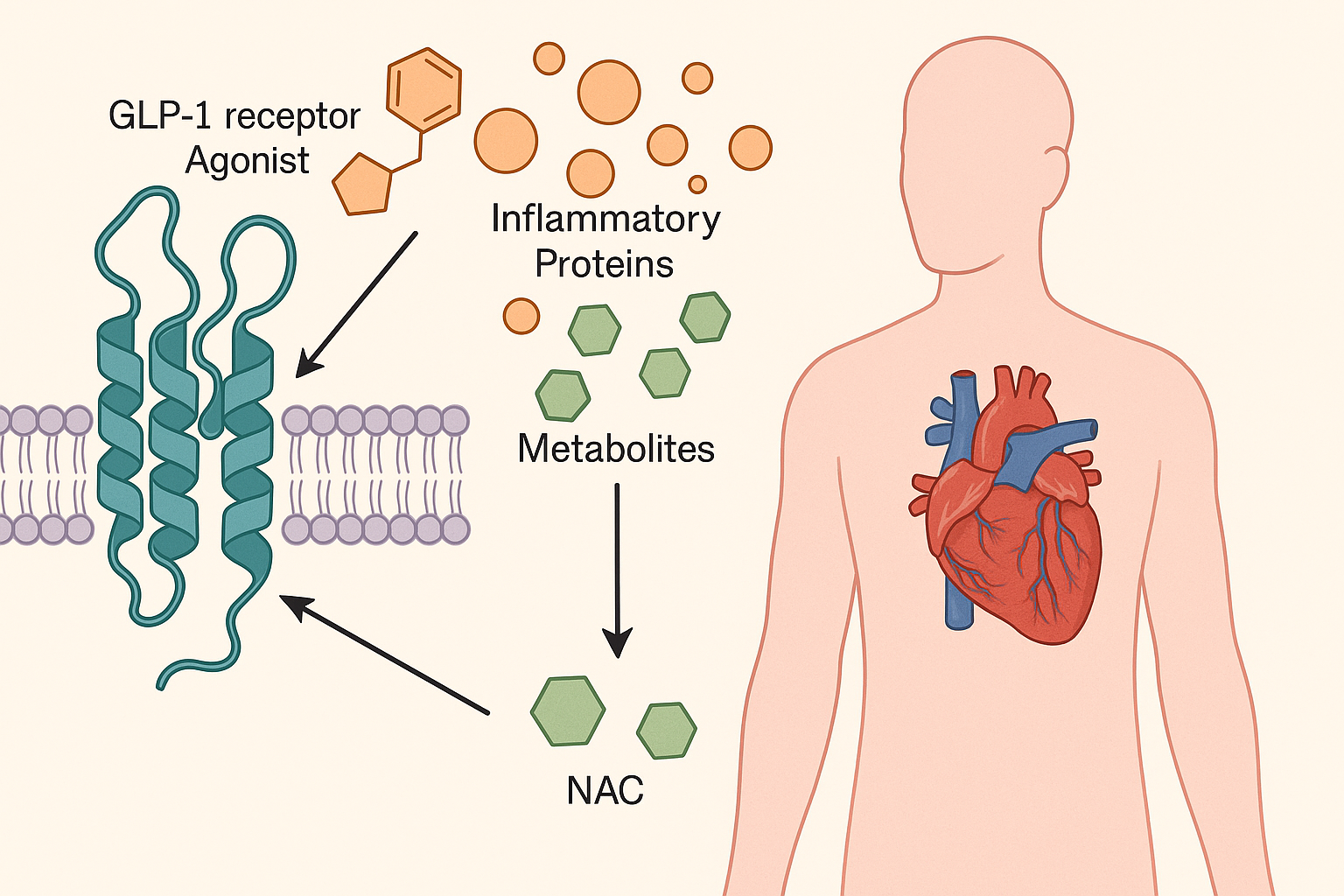
Cardiac conditions such as heart failure, stroke, and artery disease are major killers across the globe. Lowering blood sugar levels has been the focus for many years for diabetic patients, but new diabetes medications known as GLP-1 receptor agonists (GLP1Ra) appear to benefit the heart as well. Researchers wanted to know how.
On the basis of large genetic analyses in European and East Asian populations, researchers explored if GLP1Ra could protect the heart. They found that, in Europeans, patients with genetic markers of GLP1Ra activity had a 40% lower risk of heart failure. They could not, however, find the same protective effect against stroke, disease of the arteries, or atrial fibrillation, or in East Asian populations.
Drilling down further, the scientists analyzed proteins and small molecules floating in the blood. They found that GLP1Ra lowers the levels of a protein known as FGF5, linked to heart damage. High levels of FGF5 can cause the heart muscle to thicken — a bad sign for heart health. Lowering FGF5 levels explained about 4% of GLP1Ra’s heart-protective action.
They also identified another beneficial molecule named N-acetylglycine (NAC). GLP1Ra increased NAC levels, which appear to guard against heart failure by assisting with weight control, blood pressure, and inflammation reduction. NAC changes explained approximately 8% of the heart protection observed.
Briefly, GLP1Ra not only manages diabetes but also safeguards the heart, mainly through adjusting crucial proteins and metabolites responsible for heart function. However, there are more studies to be done to fully comprehend all the mechanisms by which these drugs operate and to validate the findings, especially in the case of diverse ethnic populations. The writers emphasize that while GLP1Ra is promising, gene research mostly illustrates the lifetime effects of genes and not the impact of the immediate application of the drug. Therefore, clinical trials are still valid. Nevertheless, this finding unlocks the doors to new therapies for heart conditions — perhaps with medications that were first designed to treat diabetes.
Source: https://onlinelibrary.wiley.com/doi/epdf/10.1002/ehf2.15310

